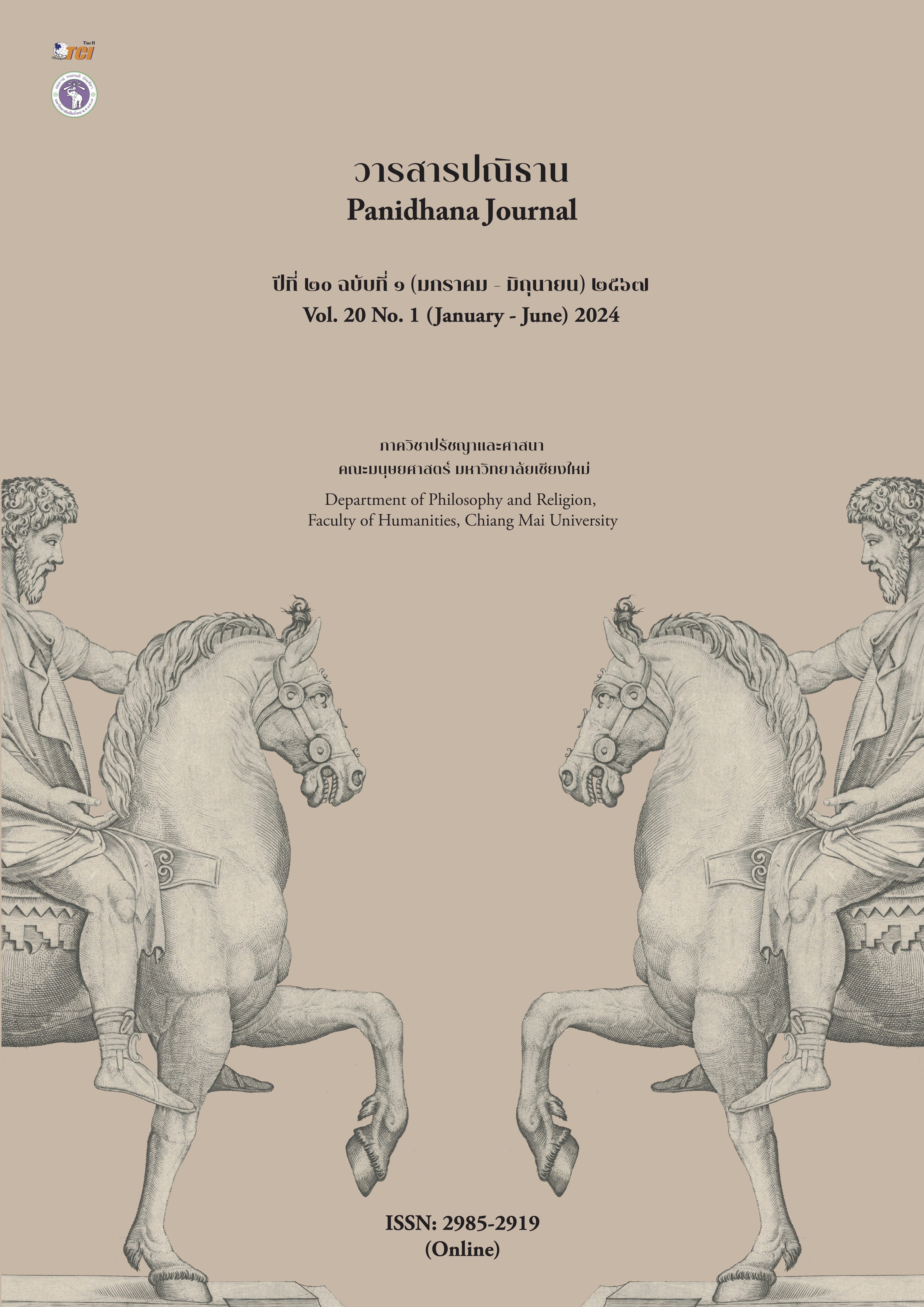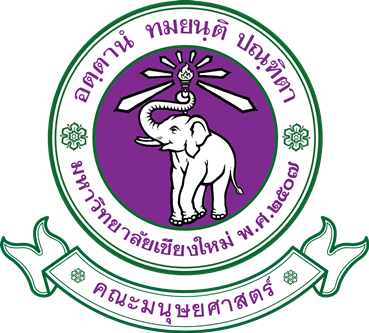Puerpera Salvation and Avalokiteśvara’s Gender Transformation
คำสำคัญ:
Avalokiteśvara, Sui-Tang period, gender transformation, puerpera salvationบทคัดย่อ
In the Buddhist pantheon, Avalokiteśvara, the deity who looks down, is considered the most important deity and is revered throughout Mahayana and Vajrayana Buddhism. The perfect embodiment of compassion, Avalokiteśvara guides believers towards knowledge and self-realization to vanquish ignorance. He is believed to have made a great vow to assist sentient beings in times of difficulty and to postpone his own Buddhahood until he has assisted every sentient being in achieving nirvana. In China, however, Avalokiteśvara, known as Kuan-yin/Guan-yin, 观音, is considered a goddess and is dubbed “Kuan-yin Niangniang (Goddess Kuan-yin)”. Significantly, the transformation of Kuan-yin from male to female is a phenomenon that has been observed to be specific to China. The Sui-Tang dynasty period is considered the turning point for the gender transformation of Kuan-yin. Kuan-yin in China is worshipped mainly for three functions: soul-guiding, baby-giving and puerpera salvation. The excavation of manuscripts from Dunhuang indicates the importance of puerpera salvation during the Sui-Tang period. However, scholars made attempts to connect the function of baby-giving to Kuan-yin’s gender transformation but not puerpera salvation, which is supposed to associate with women/women’s roles more closely. This paper highlights the connection between puerpera salvation and Kuan-yin’s gender transformation. It argues that the gender of Kuan-yin in China had to transform from a male to a female because Kuan-yin was worshipped for women’s labour safety, even during the process of delivering a child, which is considered highly private in ancient China, and it is not appropriate to pray to a male deity in such scenario.
เอกสารอ้างอิง
Bagyalakshmi. (2016). The Creation of Goddess of Mercy from Avalokiteśvara. New Delhi, India: Culture and Art.
Cui, Feng. (2013). The Reformation of Kuan-yin Belief in China. Journal of Pingdingshan University, 28: 110-114.
Fang, Yao. (2011). The Evolution of the Image of Avalokiteśvara and Reason Analysis. Fujian Religion, 6: 22-24.
Huang, Lele. (2021). From India to China: The Gender Transformation of Avalokiteśvara. New Delhi: Univision Books.
Li, Shizhen. (Ming dynasty) Bencao Gangmu.
Li, Zhende. (2002). Forbidden but Efficacious: Woman’s body in the Medicine of Early Imperial China. New History, 13 (4): 1-38.
Liang, Liling. (2016). The Cult of Puerpera Salvation Represented in Dunhuang Texts, Journal of Dunhuang Manuscripts, 10: 189-204.
Liu, Yongming. (2005). Discourse on the Fusion of Buddhism and Taoism in Buddhist Faith of Dunhuang. Journal of Dunhuang Studies, 1: 45-55.
Sun, Simiao. (Tang dynasty). Qianjin Fang (a medical masterpiece).
Sun, Xiushen & Sun, Xiaogang. (1995). The Sinicization of Buddhism in Images of Kuan-yin. Journal of Dunhuang Research, 1: 1-15.
Wang, Tao. (Tang dynasty). Wai-tai Mi-yao (a medical masterpiece).
Wang, Chong. (80 A.D.). Lunheng·Sihui Pian (known as Disquisitions, Critical Essays or The Balanced Inquiries in English).
Wang, Yan. (Southern dynasty 502-557 A.D.). Mingxiang Ji.
Watson, Burton. (trans.) (1993). The Lotus Sutra. New York, US: Columbia University Press.
Wu, Yan. (2015). The History of the Culture of Chinese Kuan-yin. Hangzhou, China: Zhejiang University Press.
Yu, Junfang. (2009). The Chinese Transformation of Avalokitesvara. New York, US, Columbia University Press.
Zhao, Bohong. (2008). Wizards and Folk Beliefs during Tang Dynasty. Academic and Cultural Chronicle of Asia University, 3: 57-70.
Zhu, Ziyan. (2000). The Denaturation of Buddhism Guanine and The Melting of Confucianism Cultures. Journal of Shanghai University, 7 (1): 24-29.
ดาวน์โหลด
เผยแพร่แล้ว
รูปแบบการอ้างอิง
ฉบับ
ประเภทบทความ
สัญญาอนุญาต
ลิขสิทธิ์ (c) 2024 วารสารปณิธาน

อนุญาตภายใต้เงื่อนไข Creative Commons Attribution-NonCommercial-NoDerivatives 4.0 International License.
เนื้อหาของบทความที่ได้รับการตีพิมพ์ในวารสารปณิธานถือเป็นลิขสิทธิ์ของวารสารปณิธาน ห้ามเผยแพร่ ตัดต่อ แก้ไข หรือนำไปใช้ก่อนได้รับอนุญาต
ผู้สนใจสามารถติดต่อขอเผยแพร่เนื้อหาในวารสารปณิธานได้ที่ panidhana-human@cmu.ac.th







